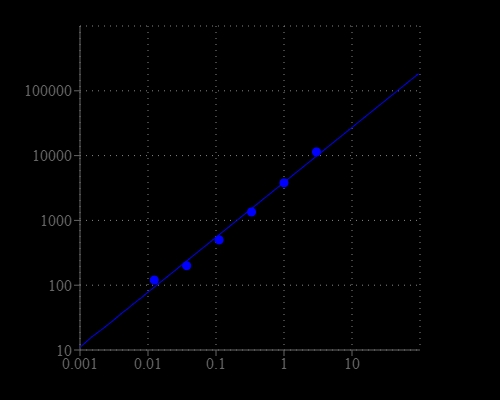Amplite® Fluorimetric Peroxidase (HRP) Assay Kit
Red Fluorescence
Peroxidase is a small molecule (MW ~40 KD) that can usually be conjugated to an antibody in a 4:1 ratio. Due to its small size, it rarely causes steric hindrance problem with antibody/antigen complex formation. Peroxidase is inexpensive compared to other labeling enzymes. The major disadvantage associated with peroxidase is their low tolerance to many preservatives such as sodium azide that inactivates peroxidase activity even at low concentration. HRP conjugates are extensively used as secondary detection reagents in ELISAs, immuno-histochemical techniques and Northern, Southern and Western blot analyses. We offer this quick (10 min) HRP assay in a one-step, homogeneous, no wash assay system. The kit can be used for ELISAs, characterizing kinetics of enzyme reaction and high throughput screening of oxidase inhibitors, etc. The kit provides an optimized 'mix and read' assay protocol that is compatible with HTS liquid handling instruments.


| Catalog | Size | Price | Quantity |
|---|---|---|---|
| 11552 | 500 Tests | Price |
Spectral properties
| Excitation (nm) | 571 |
| Emission (nm) | 584 |
Storage, safety and handling
| H-phrase | H303, H313, H333 |
| Hazard symbol | XN |
| Intended use | Research Use Only (RUO) |
| R-phrase | R20, R21, R22 |
| UNSPSC | 12171501 |
Instrument settings
| Absorbance microplate reader | |
| Absorbance | 576 ± 5 nm |
| Recommended plate | Clear bottom |
| Fluorescence microplate reader | |
| Excitation | 540 nm |
| Emission | 590 nm |
| Cutoff | 575 nm |
| Recommended plate | Solid black |
Documents
Contact us
| Telephone | |
| Fax | |
| sales@aatbio.com | |
| International | See distributors |
| Bulk request | Inquire |
| Custom size | Inquire |
| Technical Support | Contact us |
| Request quotation | Request |
| Purchase order | Send to sales@aatbio.com |
| Shipping | Standard overnight for United States, inquire for international |
Page updated on December 25, 2025

